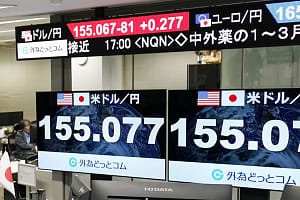Recently, the U.S. dollar has experienced a significant decline against the Japanese yen, with the USD/JPY pair breaking below the key psychological support level of 144.00.
This marks a turning point in the pair’s trajectory and reflects the prevailing concern and weakness surrounding the dollar.
The drop was not entirely unexpected, as early signs of weakness emerged amid growing U.S. financial tensions and rising concerns over Washington’s fiscal policy.
I believe this breakdown represents a critical inflexion point and could signal a shift in the dollar’s global dominance, at least in the medium term.
The primary catalyst behind the dollar’s decline is the recent credit rating downgrade of the United States by Moody’s, following in the footsteps of S&P and Fitch.
This downgrade reflects eroding confidence in the long-term fiscal path of the U.S., particularly in light of former President Donald Trump’s new tax plan proposal, which could add up to $3.8 trillion to the deficit over the next decade.
In my view, this plan not only signals a sharp increase in public debt but also threatens the stability of the U.S. bond market, which has long been considered a haven. Investors are now more cautious in their assessment of the dollar, seeing political and fiscal risks as serious threats.
On the other hand, the Japanese yen has been gradually recovering, bolstered by its status as a safe-haven asset and ongoing changes in Japan’s monetary policy. The Bank of Japan—long seen as the last bastion of ultra-loose policy among advanced economies—has begun signalling a willingness to gradually tighten its stance. These signals, combined with rising inflation and increasing domestic wages, strengthen expectations for a potential rate hike in Japan this year. I believe this shift in policy marks a fundamental development that could reshape the USD/JPY relationship and prompt traders to reassess their positions.
Recent statements by Japanese Prime Minister Kazuo Ueda emphasising the need to narrow the interest rate gap between the U.S. and Japan support this view. That gap has long been a key factor weakening the yen, but the time for rebalancing may be at hand. If inflation persists and price pressures continue, any rate hike in Japan would have a dual effect: supporting the yen and reducing import costs driven by a weak currency. I believe Japan is on track to regain some strength in its currency, especially if the U.S. Federal Reserve remains hesitant to raise rates or starts hinting at cuts.
Meanwhile, uncertainty continues to cloud the U.S. Federal Reserve’s policy direction. Despite cautious remarks from its officials, concerns about inflation expectations and pressure on the long end of the bond market are casting a shadow over U.S. monetary policy. The IMF’s recent warning about America’s “rising fiscal burden” underscores these challenges and adds to the dollar’s pressure, weakening its resilience against currencies like the yen and even the euro. I believe that hesitancy in U.S. rate hikes, coupled with growing public debt, may erode global confidence in the dollar over the medium term.
While long-term bond yields have risen in both the U.S. and Japan, the underlying context differs sharply. In Japan, the rise stems from weak government bond auctions and expectations that yield curve control will end. In the U.S., it reflects growing concerns over fiscal deficits and waning investor appetite for Treasuries. In my view, this dynamic suggests the dollar may face a prolonged period of weakness, especially if the U.S. government fails to convince markets of its seriousness in tackling the looming fiscal crisis.
Geopolitical factors also cannot be ignored. The ongoing trade imbalance between the U.S. and Japan, especially amid the potential return of Trump-era tariffs, could revive trade tensions and disputes over currency policy. Early indications that the yen’s weakness may be discussed in upcoming bilateral negotiations suggest that the currency will remain a key issue in U.S.-Japan economic relations. This raises the likelihood of more conflicting statements and policy moves that could cause sharp fluctuations in the currency market.
In light of these developments, I expect the overall trend for the USD/JPY pair to remain bearish throughout the second quarter—unless there are major surprises in U.S. monetary policy or unexpected economic developments. Market attention will now shift to upcoming U.S. economic data, bond market performance, market reactions to Trump’s tax plan, and the Bank of Japan’s next steps. Regardless, the yen’s return to prominence not just as a haven, but as a fundamentally strong currency, has already begun—and is likely to continue.
Technical analysis of ( USDJPY ) prices:
The USD/JPY pair continues its downward trajectory for the third consecutive session, clearly pressured by the weakening U.S. dollar amid escalating geopolitical tensions in the Middle East following reports of a potential strike on Iran, which has boosted safe-haven flows into the Japanese yen.
Additionally, the pair came under further pressure as Japan signalled its readiness to discuss currency market movements with the United States during the upcoming G7 summit — a move that could pave the way for tighter oversight of exchange rate volatility. These developments are seen as a reflection of Japan’s intent to curb excessive yen weakness and support currency stability.





Leave a Comment